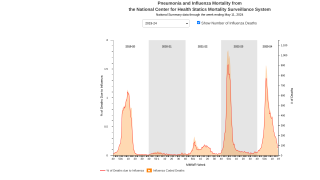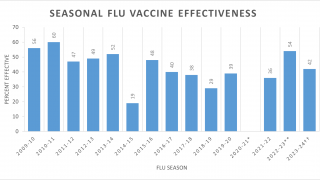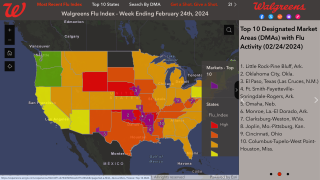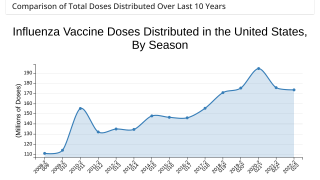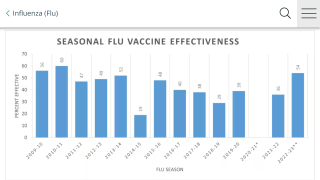Northern Hemisphere Flu Season Ending

Nationally, the U.S. Centers for Disease Control and Prevention (CDC) says the percent of laboratory specimens testing positive for one of the influenza viruses continued to decrease.
And, the flu season risk is now considered ‘low’.
Nationwide during week #14, 3.9% of patient visits reported through the U.S. Outpatient Influenza-like Illness Surveillance Network (ILINet) were due to influenza-like illness (ILI).
This is a decrease from week #13, which reported 5.2%
As of April 10, 2020, the CDC is now estimating that during the 2019-2020 influenza season in the USA, there have been at least 39 million flu illnesses, 410,000 hospitalizations and 24,000 deaths from flu.
And, the increased percentage of fatalities associated with pneumonia, rather than influenza, likely reflects COVID-19 disease activity reported in 2020.
Based on the mortality surveillance data available on March 26, 2020, 10.0% of the deaths occurring during the week ending March 28, 2020 (week 13) were due to pneumonia and influenza (P&I).
This percentage is significantly above the threshold of 7.1% for week #13.
And, based on death certificate data, the percentage of deaths attributed to COVID-19 disease increased from 4.0% during week #13 to 6.9% during week #14.
And the percentage of deaths due to pneumonia (excluding COVID-19 or influenza) decreased from 7.5% during week 13 to 7.2% during week #14.
‘These changes impact data from ILINet in ways that are difficult to differentiate from changes in illness levels, therefore ILINet data should be interpreted with caution’ said the CDC.
Furthermore, 166 influenza-associated deaths in children have been reported so far this flu season.
This amount remains lower than the 2017-2018 season during which 188 pediatric fatalities were reported by the CDC.
While influenza B/Victoria viruses predominated earlier in the season, during recent weeks, influenza A(H1N1)pdm09 viruses have been reported more frequently than B/Victoria viruses nationally and in all surveillance regions.
In the most recent 3-weeks, influenza A viruses are the most commonly reported influenza viruses in all age groups. For the entire flu season, A(H1N1)pdm09 viruses are the predominant virus nationally.
Additionally, the CDC says antiviral medications are an important adjunct to a flu vaccine in the control of influenza virus.
The CDC also assesses the susceptibility of influenza viruses to the antiviral medications, which includes the neuraminidase inhibitors (oseltamivir, zanamivir, and peramivir) and the PA endonuclease inhibitor baloxavir, using next-generation sequence analysis supplemented by laboratory assays.
Almost all (>99%) of the influenza viruses tested this season are susceptible to the four FDA-approved influenza antiviral medications recommended for use in the U.S. this season.
Precision Vaccinations publishes flu season news.
Our Trust Standards: Medical Advisory Committee















